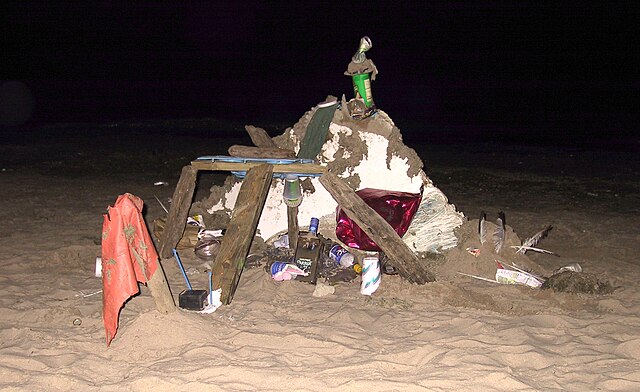Readymades of Marcel Duchamp
The readymades of Marcel Duchamp are ordinary manufactured objects that the artist selected and modified, as an antidote to what he called "retinal art". By simply choosing the object and repositioning or joining, titling and signing it, the found object became art.
Marcel Duchamp's studio at 33 West 67th Street, New York City, 1917–18. Shown to the left is the 2nd version of Bicycle Wheel, 1916-17. The original 1913 version and this 2nd version are lost. The coatrack, titled Trap (Trébuchet), 1917, is on the floor, lower left.
Marcel Duchamp, Fountain, 1917. Photograph by Alfred Stieglitz
Marcel Duchamp, 1919, L.H.O.O.Q. a parody of the Mona Lisa with a goatee and moustache.
A found object, or found art, is art created from undisguised, but often modified, items or products that are not normally considered materials from which art is made, often because they already have a non-art function. Pablo Picasso first publicly utilized the idea when he pasted a printed image of chair caning onto his painting titled Still Life with Chair Caning (1912). Marcel Duchamp is thought to have perfected the concept several years later when he made a series of ready-mades, consisting of completely unaltered everyday objects selected by Duchamp and designated as art. The most famous example is Fountain (1917), a standard urinal purchased from a hardware store and displayed on a pedestal, resting on its back. In its strictest sense the term "ready-made" is applied exclusively to works produced by Marcel Duchamp, who borrowed the term from the clothing industry while living in New York, and especially to works dating from 1913 to 1921.

Marcel Duchamp, Fountain, 1917. Photograph by Alfred Stieglitz
Alphonse Allais, Des souteneurs encore dans la force de l'âge et le ventre dans l'herbe boivent de l'absinthe, carnage curtain, before 1897.
An Oak Tree by Michael Craig-Martin; 1973
Junk art at Oak Street Beach






